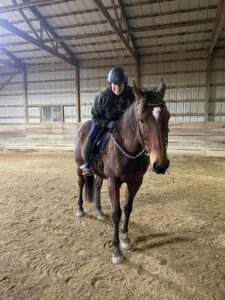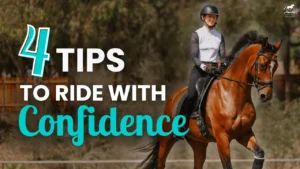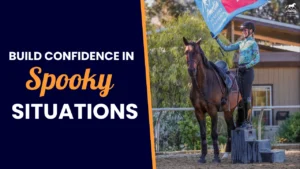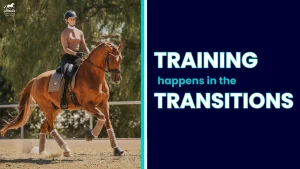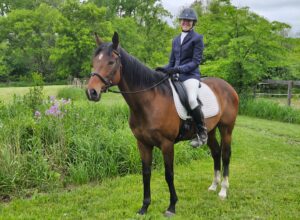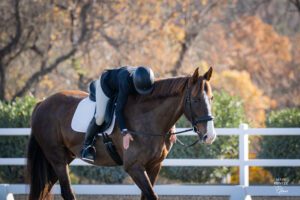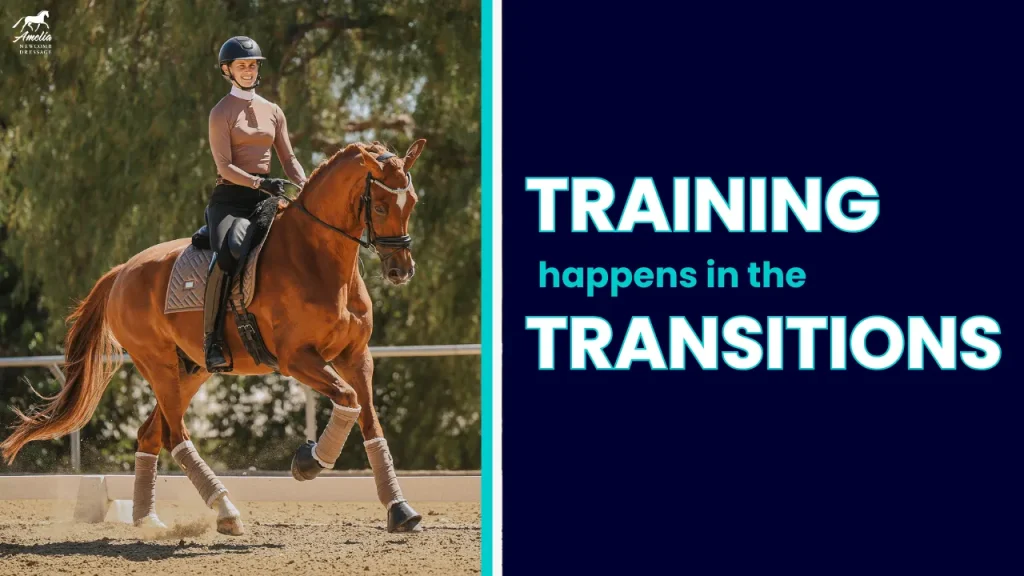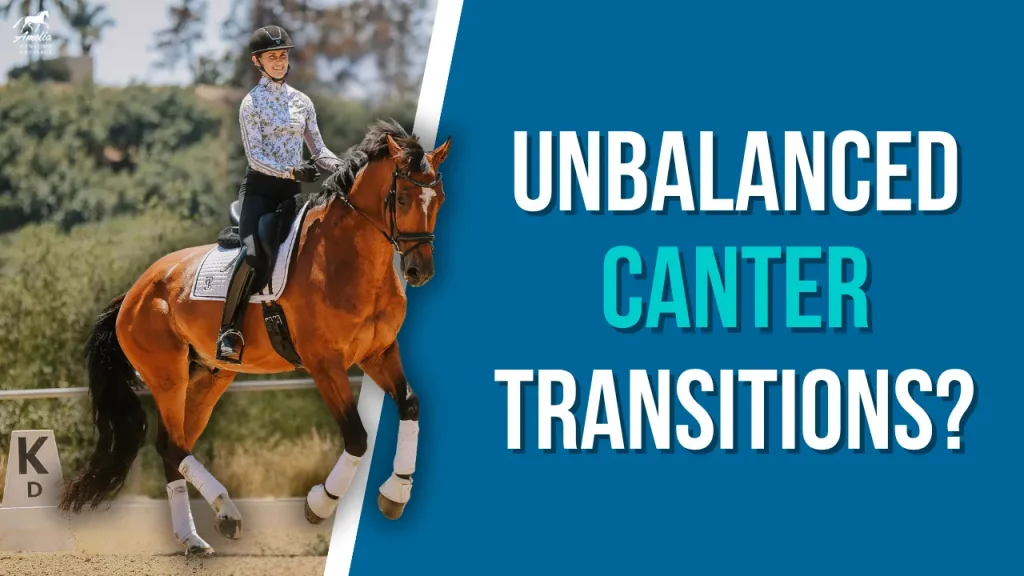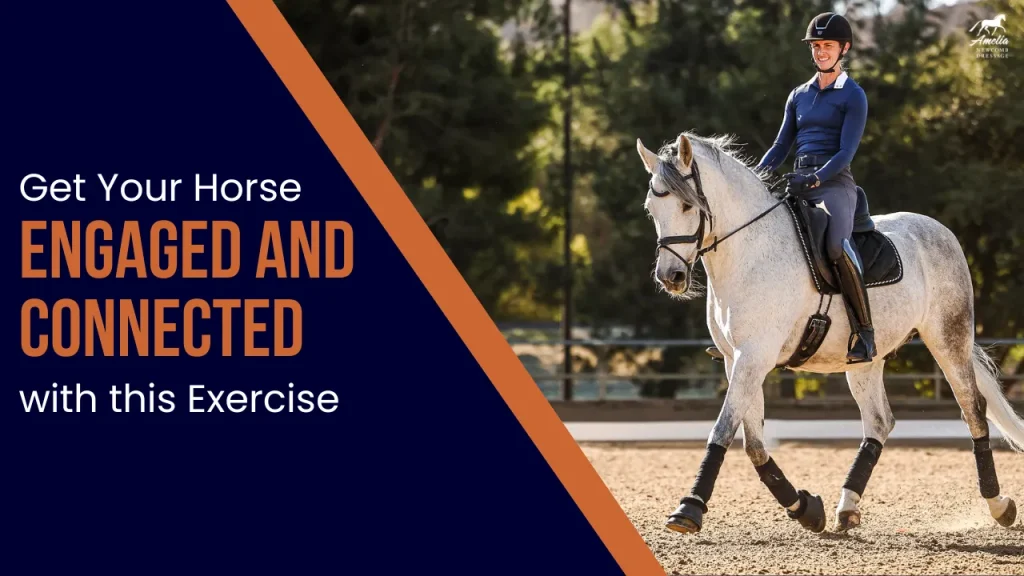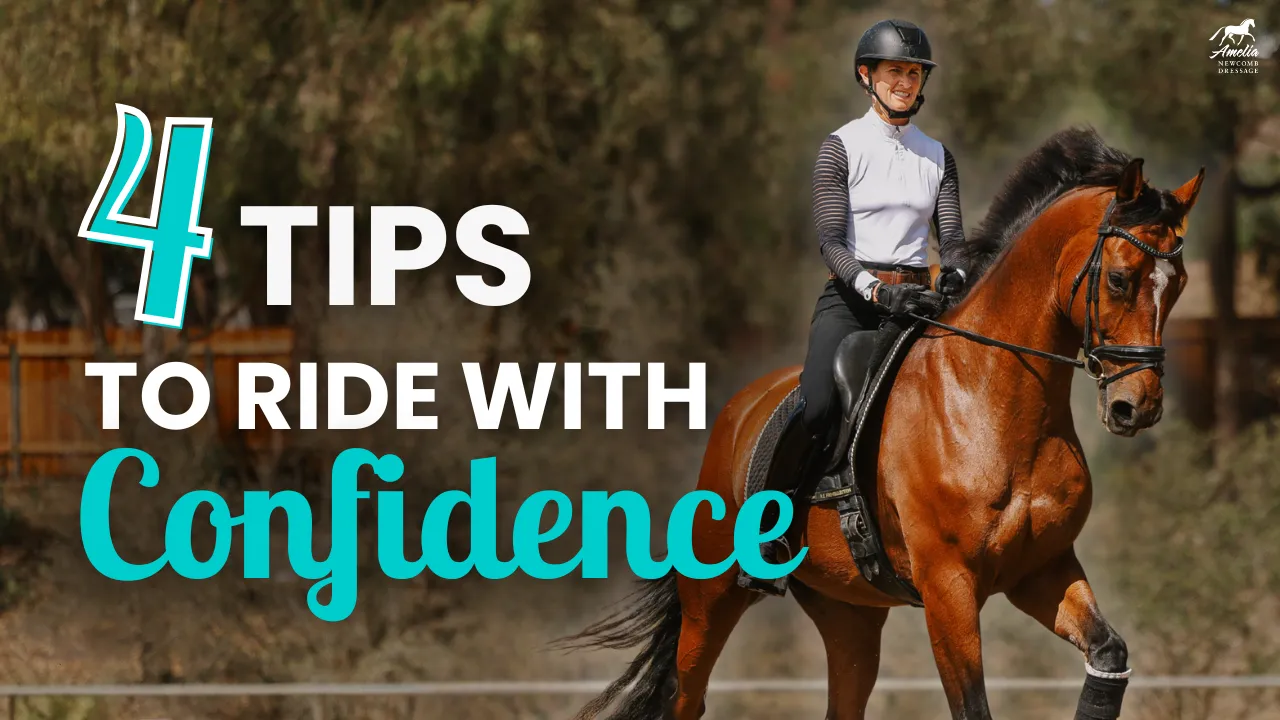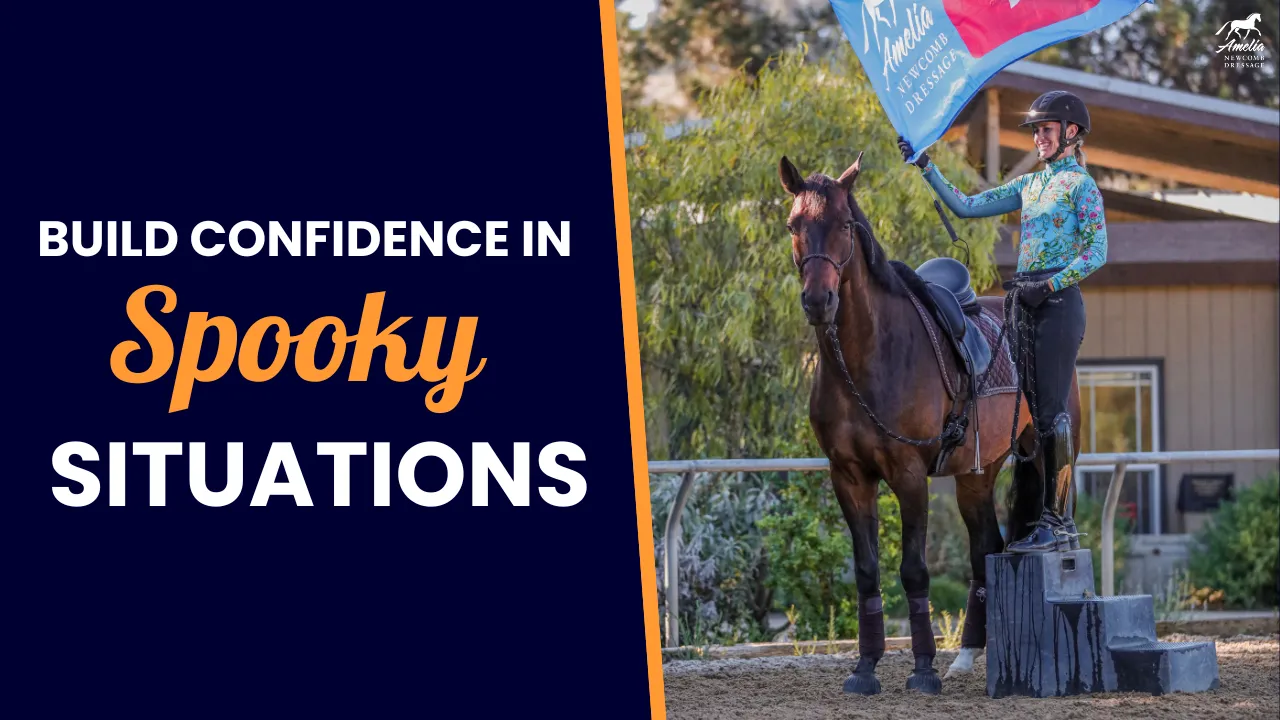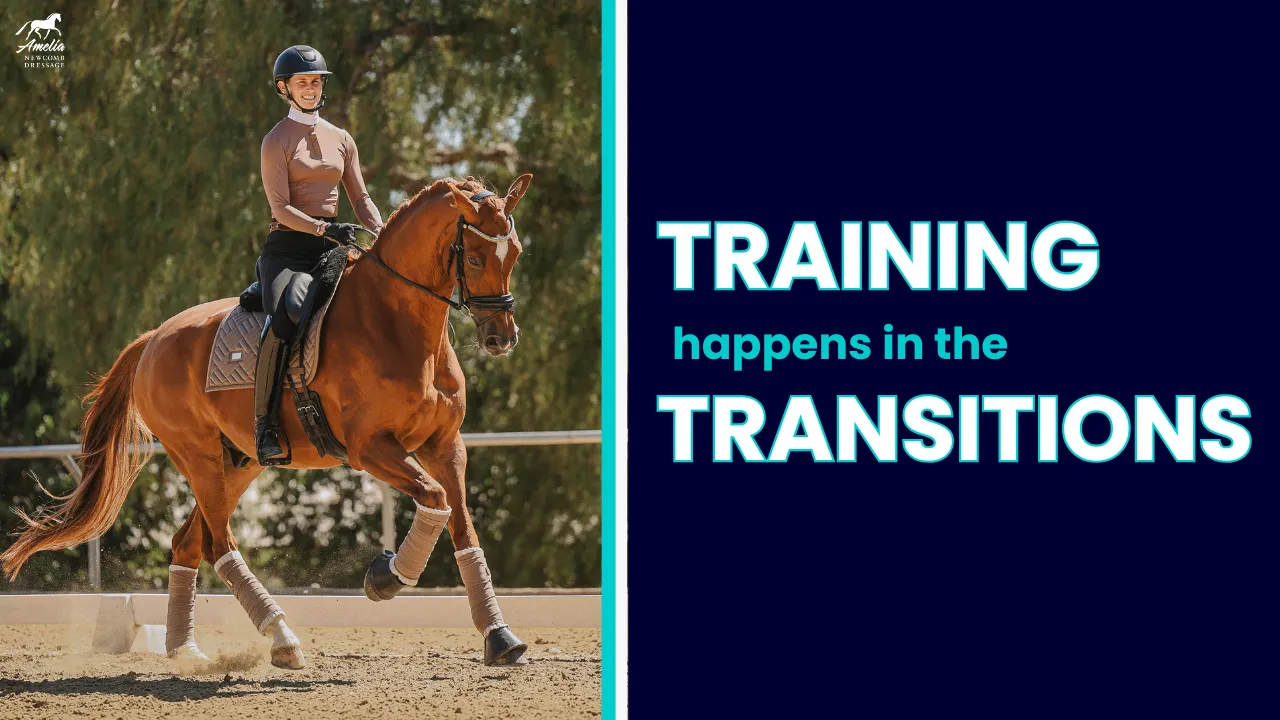How to Ride Transitions Within the Gait
Transitions within the gait—such as lengthening and shortening the trot or canter—are essential skills for riders and horses. These transitions become increasingly important as you progress up the levels from first level to Grand Prix.
Why Transitions Within the Gait Are Important
Transitions within the gait help:
- Strengthen your horse’s hindquarters.
- Improve balance and rhythm.
- Teach responsiveness to subtle aids.
- Lay the foundation for advanced movements like piaffe and extended gaits.
Practicing Transitions in the Trot
- Establish a Working Trot:
- Begin with a forward, active working trot.
- Keep your horse straight, balanced, and between your aids.
- Ask for a Shortened Trot:
- Use your core muscles and engage your seat to ask for smaller steps.
- Avoid pulling back on the reins; instead, stabilize your hands and let your body dictate the pace.
- Keep your legs gently active to ensure the hind legs stay engaged and the tempo is maintained.
- Return to a Forward Trot:
- Release your aids to allow the trot to move forward again.
- Use your legs to encourage longer strides without losing rhythm or balance.
- Common Mistakes to Avoid:
- Pulling with the hands: This can make your horse hollow and tense.
- Driving too much with the seat: Avoid pushing down with your seat, which can cause your horse to lose rhythm.
- Clamping with your legs: This restricts movement in your body and creates tension in the horse.
Practicing Transitions in the Canter
- Establish a Balanced Canter:
- Begin in a steady working canter.
- Ensure your horse is moving forward and maintaining rhythm.
- Ask for a Collected Canter:
- Use your seat and core to half-halt and shorten the stride.
- Maintain light leg contact to keep the canter active and prevent your horse from breaking into a trot.
- Return to a Forward Canter:
- Soften your aids and follow with your hips and hands to encourage longer strides.
- Use your legs to support the transition without pushing your horse out of rhythm.
- Common Mistakes to Avoid:
- Leaning forward: This can unbalance your horse and cause a loss of rhythm.
- Rigidity in the aids: Ensure your body remains soft and supportive, even while giving half-halts.
Tips for Success
- Practice in sitting trot or canter for better communication and control.
- Use your core muscles to control the transition, avoiding over-reliance on the reins.
- Gradually increase the degree/intensity of the lengthening and shortening as your horse gains strength and understanding. Don’t try to go too long/or too much at first.
With patience and consistent practice, transitions within the gait will enhance your horse’s responsiveness, rhythm, and strength, setting the stage for success in any level of dressage.
Happy Riding!
Amelia
